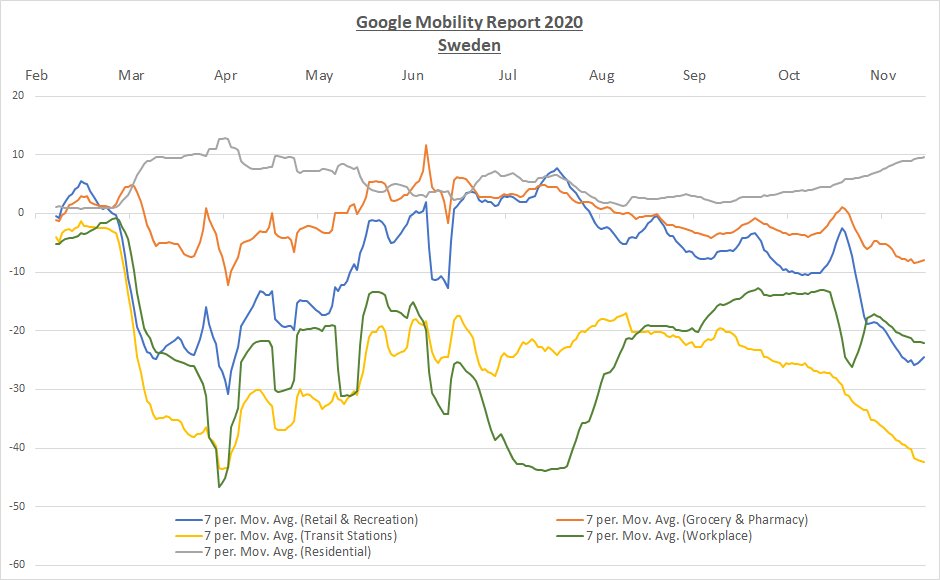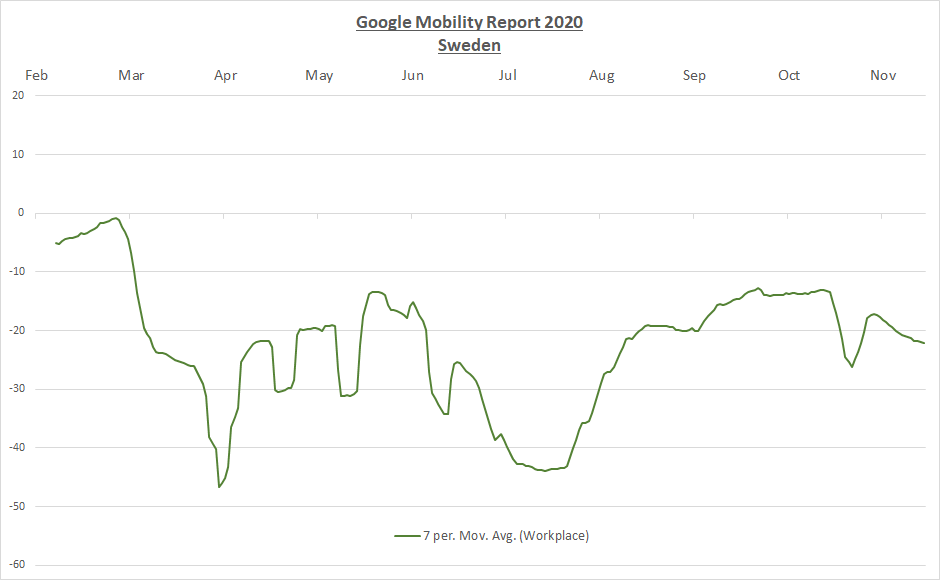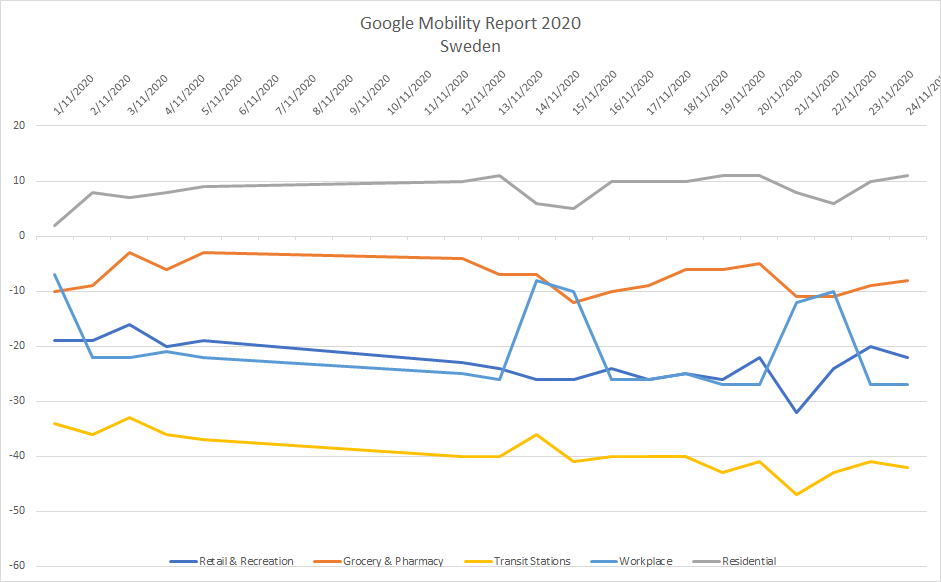Both FHM and ECDC have predicted ... or, in FHMs case, published a "scenario" .... where they believe sars-cov-2 cases will peek in Sweden in about 2 weeks.
This seems to be based on data from Google and Telia showing Swede's behaviour has returned to levels similar to April.
This seems to be based on data from Google and Telia showing Swede's behaviour has returned to levels similar to April.
People are staying at home almost as much as in April. Retail has also dropped almost as much, as grocery and pharmacy.
Surprisingly, in contrast to reports I've had from Stockholm, movement in transit stations - ie public transport, has also plummeted to levels similar to April
Surprisingly, in contrast to reports I've had from Stockholm, movement in transit stations - ie public transport, has also plummeted to levels similar to April
This will all have an affect on transmission rates, and likely reflects the behavioural changes which have contributed to R decreasing from the peaks of a few weeks ago.
One metric stands out a little though - workplace, which appears to also include schools.
One metric stands out a little though - workplace, which appears to also include schools.
While we have reached levels approximately 20% below pre-pandemic baseline, there has not been the dramatic shift we had in April. As the graph shows, this metric appears to be heavily influenced by school holidays, and I would assume, the move to remote learning in Spring.
I'm not, however as optimistic as the ECDC and FHM that this will lead to a peak in 2 weeks. The vast majority of this behaviour changed happened in October. November looks like this -
If this behaviour was going to lead to a significant dropping off of infections, then we should already have seen the peak in cases and it now decreasing. That does not appear to have happened.
I suspect the ECDC is underestimating the contribution of the environmental contributors in Spring, ie temperature and humidity, to the decline in cases we saw then and attributing the decline to primarily (or entirely?) to the behavioural changes.
I think it's a mistake to assume that the same behavioural changes would have the same effect on infection rates in the winter. In addition, workplace attendance does not appear to have dropped the same amount.
On a positive note, we do have school holidays approaching, and this may contribute to a further fall in R, perhaps even getting it to 1 or below, an effect that should be apparent in January.
Against this, however, is the risk of holiday gatherings.
Against this, however, is the risk of holiday gatherings.
*If* Swedes resist the Christmas and New Year's parties I'm hopeful for a decrease in cases early in the new year.
Unfortunately I don't think it will last, and we'll start to get a rise again towards the end of January and in to February after return to school and work.
Unfortunately I don't think it will last, and we'll start to get a rise again towards the end of January and in to February after return to school and work.
February is typical peak season for respiratory diseases in Sweden and I see no reason to believe that sars-cov-2 will be any different.
There is some hope on the horizon though!
There is some hope on the horizon though!
With some diligence by the government, we may have vaccines rolling out to the most vulnerable before then - so while cases may peak at a higher level, the worst of the mortality could be behind us.
Of course, as anyone with #longcovid can attest, we still want to minimise the spread of infections as much as possible.
#stayathome
#wearamask indoors when you can't
indoors when you can't
#stayathome

#wearamask
 indoors when you can't
indoors when you can't

 Read on Twitter
Read on Twitter





